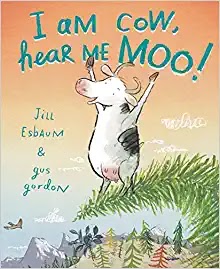Creating a Culturally Inclusive
As I've said before, creating an inclusive classroom is a prerequisite to student engagement & learning.
The Oxford Dictionary defines Culture as "the arts and other manifestations of human intellectual achievement regarded collectively."
Translation? Culture is the collection of ideas, music, art, dance, & beliefs which unifies a group of people.
Notice how music is instrumental here? If you're not honoring a variety of cultures in your classroom, you're missing out on incredible opportunities!
After reading this, hopefully you'll either reaffirm the awesome job you're already doing in terms of creating a culturally inclusive classroom OR have some simple steps to take this school year.
Culturally inclusive Checklist
- Say your students' names correctly.
- Ask students about the holidays they celebrate in their homes.
- Sing songs from around the world
- Pick at least 1 song from a non-dominant culture per concert
- Select diverse books that reflect your students' cultures
- Educate yourself - a lot!
Educate yourself: Names
Acknowledge that you don't know everything - and that's okay!! We have so much information available to us which is great, but it can be overwhelming.
Ask your students how to say their names. A few years back I found the picture book "Your Name is a Song" and fell in love. Like, use it for back to school lessons each year!
In this story, the main character is a little girl whose teacher has difficulty saying her name. To combat it, the girl's mom reminders her "Your Name is a Song" which ultimately helps everyone pronounce her melodious name correctly. It also takes the reader on a journey filled with diverse names. Love stories? Here are some more of my faves.- Ask families to fill out a holiday form at Back to School or Meet Your Teacher nights. You can ask explicitly or create an open invitation where parents can elect to share or opt out.
- Meet with students & ask about holidays, things they do on weekends, etc. HUman beings are relational, so it's okay to let them know a bit about you, too. If they share the same love of horseback riding as you do, say so!
- Ask classroom teachers to share information they've gathered.
- Follow a holiday calendar and plan music for a variety of holidays around the world.
- Christmas, Hanukkah, New Year, Chinese New Year, Ramadan, Eid, Easter, Diwali, Valentine's Day, Halloween, Dia de los Muertos,
- Harvard's Heritage Month list
- Culture is more than holidays and they do not have to be religious in nature.
- Do your students love the superbowl or go nuts for March Madness? Incorporate secular celebrations as well.
- Recognize similarities & differences, but be sure not to confuse 2+ holidays. For example, Día de los Muertos, All Saints Day, & Halloween are celebrated at similar times of the year and certainly have similarities but ARE NOT THE SAME!
Educate yourself: World Music
Folk songs are ideal for music classrooms because they often have similar melodies & musical forms.
Do you have Spanish speaking students? Consider songs from Spanish speaking countries:
- La Cucaracha
- La Bamba
- Remember Me (Coco)
- Arirang - Korea
- Eyes that Kiss in the Corner - Taiwan & China
- Sakura, Sakura - Japan
- Ai Hay Io - China
- African Noel - Liberia
- Siyahamba - South Africa
- Kye, Kye, Kule - Ghana
- Ram Sam Sam - Morocco
- Four White Horses - Caribbean
Lastly, know your content




Comments
Post a Comment
If you have a Google account (such as Youtube, Gmail, Google Apps, Google+, Blogger), feel free to leave a comment or words of encouragement here! If you don't have a way to sign in, you can still leave a message on the main page under the 'Leave Jaime a Message' title on the right side of the page, below the calendar!